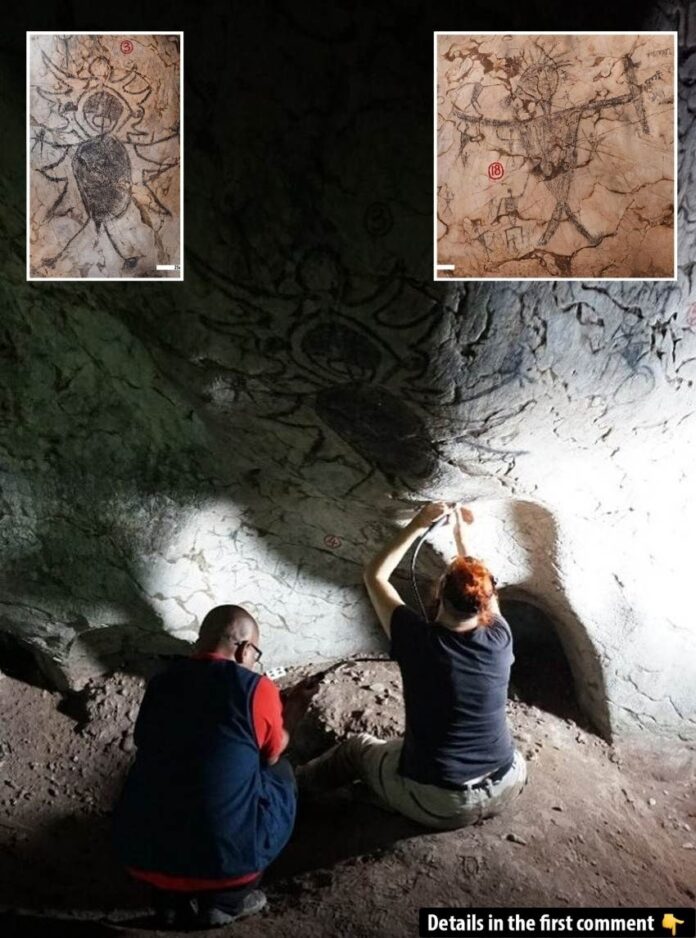Hidden within the limestone chambers of Gua Sireh Cave in Sarawak, Malaysia, lies a remarkable story etched in charcoal—a testament to resilience and resistance from centuries past. Recently dated to the 1600s and 1800s CE, these ancient drawings vividly depict moments of conflict and survival during a turbulent era for the Indigenous Bidayuh people. This extraordinary discovery bridges art, history, and oral tradition, shedding light on a chapter of human courage that continues to inspire and intrigue.
Discovery and Dating of the Drawings
The Gua Sireh drawings were analyzed through a groundbreaking collaboration between the Griffith Centre for Social and Cultural Research and the Sarawak Museum Department. Radiocarbon dating revealed that these charcoal drawings were created between CE 1670 and 1830, a turbulent period marked by escalating conflict between Malay elites and Indigenous tribes.
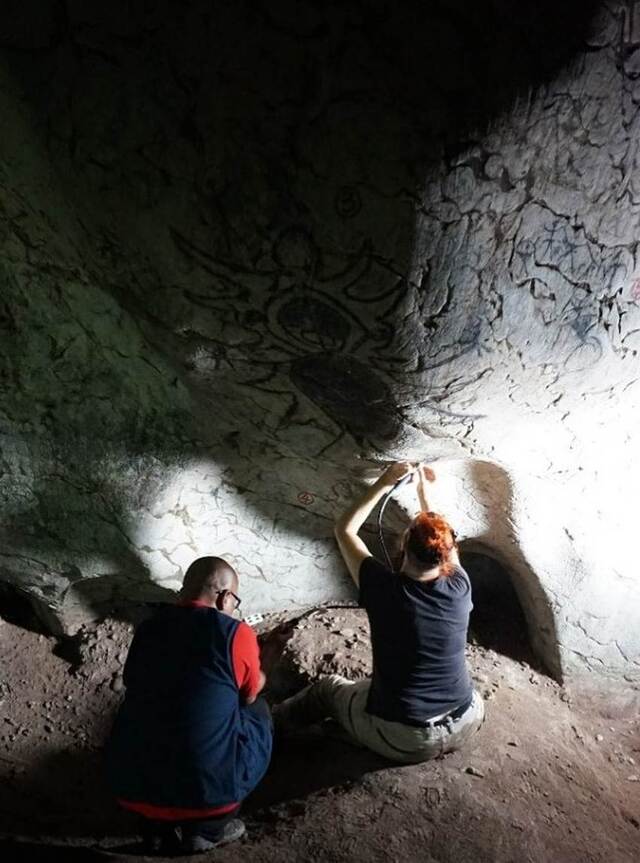
The team, led by Dr. Jillian Huntley, employed cutting-edge techniques to confirm the use of bamboo charcoal in the drawings, ensuring the material was suitable for radiocarbon dating. Due to the limestone walls’ protective nature, the drawings remained remarkably well-preserved, allowing researchers to extract invaluable historical data.
Video
“Discover what cave paintings can reveal about our ancestors – watch the video from Ancient Earth to explore the stories captured on ancient walls!
The Historical Context
The artwork dates back to an era when Malay elites controlled the region, imposing heavy tolls and demands on local tribes like the Bidayuh. These pressures created significant tension, leading to acts of resistance and territorial disputes. The drawings reflect this backdrop of oppression and defiance, immortalizing a time when survival often meant fighting against overwhelming odds.
One particularly harrowing episode from the 1800s, as recounted through Bidayuh oral histories, underscores this context. When a Malay chief demanded the surrender of their children, the Bidayuh refused and retreated to Gua Sireh, using the cave as a fortress. Despite facing a force of 300 armed men, they successfully safeguarded their children by escaping through a concealed passage at the back of the cave. This story, preserved in oral tradition, resonates through the depictions found on the cave walls.
Depictions in the Cave Paintings
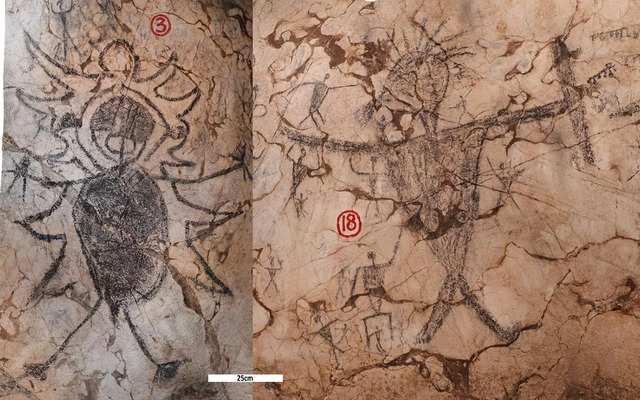
The drawings in Gua Sireh vividly capture various facets of life, blending scenes of conflict and culture. Figures are shown wearing headdresses and wielding traditional weapons like the Pandat and Parang Ilang, commonly used in tribal warfare. Other scenes depict activities such as hunting, fishing, and even dancing, suggesting that these artworks were not only records of violence but also celebrations of community life.
These charcoal illustrations are part of a broader artistic tradition found across Southeast Asia, linked to Austronesian-speaking peoples. Similar rock art has been discovered in the Philippines, Sulawesi, and Peninsular Malaysia, with some dating back thousands of years. The Gua Sireh drawings add another piece to this regional puzzle, highlighting the shared cultural and artistic heritage of these communities.
Bidayuh Oral Histories and the Role of Gua Sireh
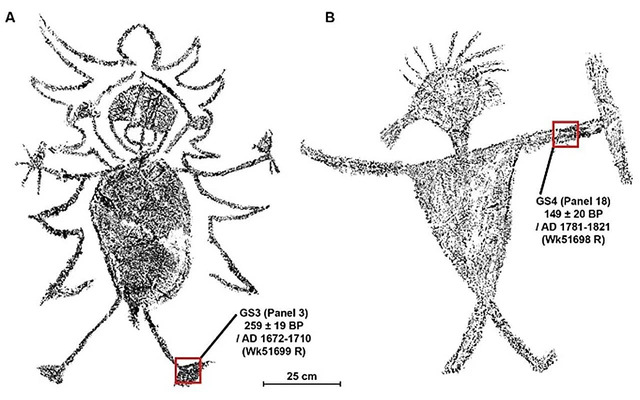
The oral traditions of the Bidayuh people, who maintain custodial responsibilities over Gua Sireh, provide crucial context for interpreting the cave paintings. These stories recount how the cave served as a sanctuary during times of crisis, particularly during territorial violence in the early 1800s.
The depictions of armed resistance and survival align with these oral accounts, bridging the gap between archaeological evidence and living memory. This connection underscores the importance of collaborating with Indigenous communities to preserve and interpret cultural heritage sites like Gua Sireh.
Broader Connections in Southeast Asian Rock Art
The findings at Gua Sireh are part of a larger network of rock art across Southeast Asia, reflecting the history and movements of Austronesian-speaking peoples. Previous research by the Griffith Centre for Social and Cultural Research has dated similar drawings in the Philippines to around 3,500 years ago and in southern Sulawesi to approximately 1,500 years ago.
These interconnected artistic traditions highlight the cultural and social exchanges that shaped the region over millennia. Gua Sireh’s drawings contribute to this narrative, offering a localized yet universal story of human resilience, creativity, and resistance.
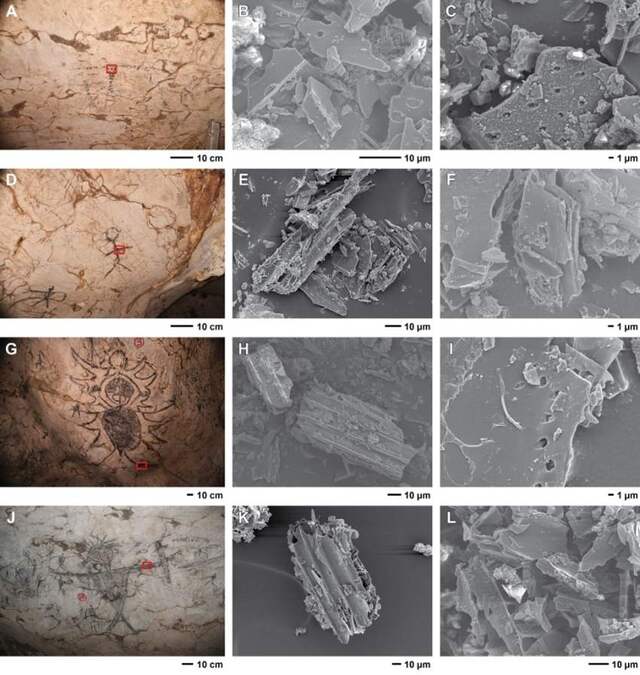
Preservation and Ongoing Research
The remarkable preservation of the Gua Sireh drawings emphasizes the importance of safeguarding such sites for future generations. Researchers are now working to document these artworks comprehensively, ensuring they remain a valuable resource for both scientific study and cultural heritage.
This discovery also opens doors for further research into the social and historical contexts of the drawings. By combining advanced analytical techniques with Indigenous knowledge, researchers hope to uncover more about the lives and experiences of the people who created them.
Video
Explore the mystery of ancient cave paintings and the question: Did humans create them? Watch the National Geographic video to uncover the truth behind these ancient artworks!
Conclusion
The charcoal drawings in Gua Sireh Cave stand as a testament to the courage and resilience of the Bidayuh people, immortalizing their resistance against oppression and their determination to protect their community. This discovery not only enriches our understanding of Southeast Asian history but also highlights the enduring power of art as a medium for storytelling and cultural preservation.
As researchers continue to explore and document these artworks, the lessons from Gua Sireh remind us of the importance of preserving the past to inspire and inform the future. These ancient depictions of conflict and courage serve as a bridge between generations, connecting us to the struggles and triumphs of those who came before us.
